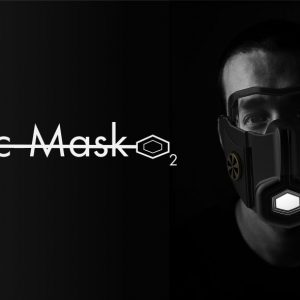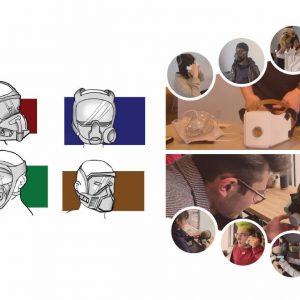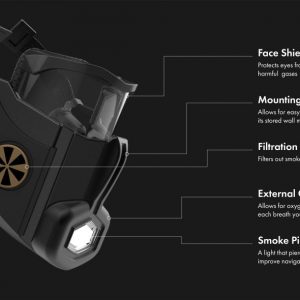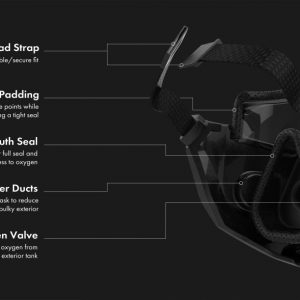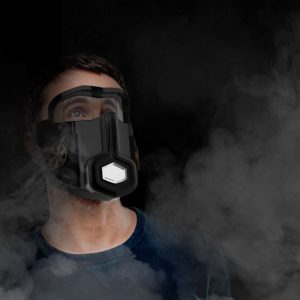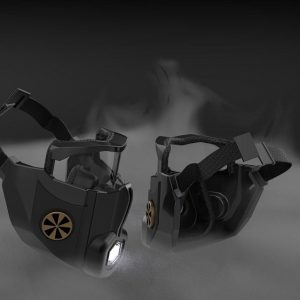Product Name: Evac-Mask O2
Topic/problem description:
People in fires are faced with some of the hardest decisions while under one of the most difficult physical and mental obstacles of their life. Unfortunately, fires have become increasingly more common and incredibly more dangerous due to the newer more flammable synthetic materials implemented in current household furniture. In just two minutes, a fire can become life-threatening. In five minutes, a residence can be engulfed in flames. The toxic gases and the superheated air in the smoke make it extremely dangerous to come in contact with externally and internally. According to Yoshidas, “A Study on House Fire Victims” (December 1, 1991), When fire and smoke fill up a room it greatly diminishes the oxygen levels in that room. Under normal conditions, the percent of oxygen in the air is roughly 21%. Even when this percentage is just slightly lowered to 16% physical and mental ability becomes significantly impaired. When you combine the psychological impact of risk assessment when escaping a fire with the physical impairment of mental ability when you are deprived of oxygen, your success rate of escaping a fire is close to none. Current masks will simply filter out toxins in the air which is not effective due to the high density of the smoke created from the synthetic materials burning. Due to the fact that you will be getting no external means of oxygen, people will be taking in deeper breaths, thus pulling higher amounts of smoke through this filtration system. Filters provided for civilians aren’t combined with external means of oxygen to help balance out the high amounts of filtration needed to function.
According to John L. Bryans, “Building Fires” no. 4 (1980), many people are forced into a state of fight or flight during these hard situations and in many cases people will resort to attempting to retrieve their belongings, protect their loved ones, and extinguishing the fire. But once your last line of defense fails and the fire extinguisher can no longer put out the fire, you are most likely faced with a fire that is out of your control and you must begin your plan of escape. Current households are not equipped with proper means to escape a fire beyond this point and these are the reasons for fatalities due to entrapment. According to Yoshidas, “A Study on House Fire Victims” (December 1, 1991), Every year there are a total of 358,500 fires in the United states alone, these fires lead to an average of 12,300 people injured along with 2,510 deaths. People are not equipped for fires to the extent that they need to be. Victims of fires need to have better options and tools to protect themselves when escaping a fire. This presses the question; how might we be able to design optimal protection for potential victims of fires to improve chances of survival, or even survive until the firefighters arrive?
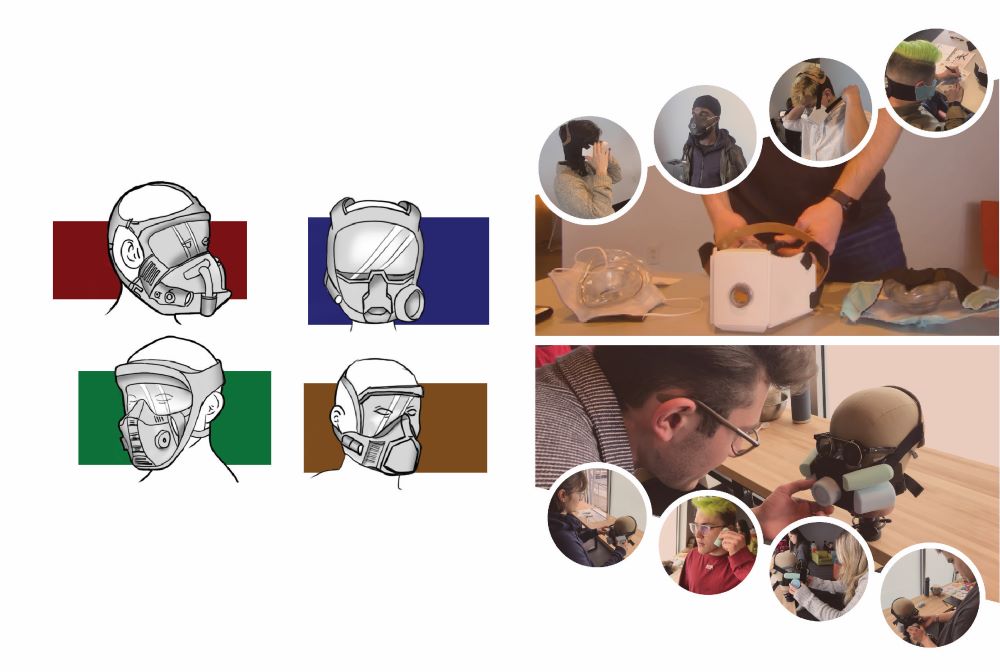
Solution:
This has led me to develop a more effective method for providing optimal protection while a victim is escaping a fire. The goal is to relieve mental and physical stress on the user in order to enhance their ability to have productive decision making capabilities along with providing a supply of oxygen to reduce fatigue due to the lack of oxygen in the air. The most effective use of a self contained breathing apparatus is found in current firefighters turnout gear. This provides a method for circulating an external source of oxygen in with each breath you take. An external tank embedded near the mouth and chin will allow for you to pull oxygen into your mask along with the clean air through filters located on your left and right cheek. This could be implemented in my device on a smaller scale, providing the user enough time to escape the building with a clear head.
The smoke that fills their air will cause severe damage to your eyes along with impairing your vision. This brings up two obstacles, first being the need for an airtight seal around your eyes to ensure no smoke can come in contact with your eyes and impair them. The second obstacle in how the user will see through this smoke. On the product there will be a face mounted smoke piercing flashlight. These don’t have to be the highly expensive ones people buy for job use that see yards ahead of you. There are ones that effectively see a solid distance Infront of you that can be reverse engineered to supplement this product. This aspect will also work to signify to firefighters where you are in a room to quickly locate you during their rescue.
The product will also include compact means for thermal protection during your escape. This includes reverse engineered material analysis of firefighters turnout gear along with some methods used in forest fighter fire shelters. This will primarily be implemented into the thermal protection found in the face gear.
How this product is stored and accessed is crucial in this product, ensuring there are no obstacles when locating and accessing the product. People should be encouraged to store this both in their households, or if they have residents or employees in their building it will be essential in ensuring a safe environment. Households and buildings lack the primary tools to remain safe during an entrapment.
Resources:
John L. Bryan, “Building Fires,” JAE 33, no. 4 (1980): 32–37, https://doi.org/10.2307/1424688.
John M. Cobin, “The Enterprise of Fire Safety Services in Lagos, Nigeria,” The Independent Review 17, no. 3 (2013): 379–414, www.jstor.org/stable/24563183.
Bryan, “Building Fires.”
Yoshida et al., “A Study on House Fire Victims: Age, Carboxyhemoglobin, Hydrogen Cyanide and Hemolysis,” Forensic Science International 52, no. 1 (December 1, 1991): 13–20, https://doi.org/10.1016/0379-0738(91)90091-V.
“Newer Homes and Furniture Burn Faster, Giving You Less Time to Escape a Fire,” TODAY.com, accessed November 30, 2019, https://www.today.com/home/newer-homes-furniture-burn-faster-giving-you-less-time-escape-t65826.
Yoshida et al., “A Study on House Fire Victims.”

